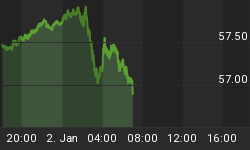Wages are up and output per hour is down. Is this the magic mix for what ails the economy?
Productivity declined 0.6%, exactly in-line with the Bloomberg Econoday consensus.
Productivity remains a key weakness of the economy and is especially evident during the low output of the first quarter. The second estimate of first-quarter nonfarm productivity came in at a quarter-to-quarter annualized decline of 0.6 percent. Output during the quarter rose 0.9 percent but the increase was outmatched by a greater increase for hours worked, up 1.5 percent. Not only did hours exceed output, compensation rose at the same time, up 3.9 percent to lift unit labor costs by 4.5 percent.
Trends in the data show less weakness with year-on-year productivity up 0.7 percent and unit labor costs up 3.0 percent. Here output, up a year-on-year 2.3 percent, exceeds hours worked, up 1.6 percent. Compensation is up a year-on-year 3.7 percent with unit labor costs up 3.0 percent.
American workers did not perform well in the first quarter, reflecting to a significant decline lack of business investment in new equipment.
Nonfarm Productivity vs. Costs

Curiously, Bloomberg also states "Nonfarm productivity growth has remained healthy during this expansion, but it has prevented employment from growing very fast and this hurt income growth to some extent. Unit labor costs tend to fall when productivity growth accelerates and then rises as productivity growth abates."
The above chart does not look like "healthy" gains in productivity to me.
Unexpectedly Strong Wage Growth
The Wall Street Journal chimes in with U.S. Productivity Fell 0.6% in First Quarter.
Nonfarm productivity, reflecting the amount of goods and services employees produce per hour worked, fell at a yearly rate of 0.6% in the first quarter, the Labor Department said Tuesday. That replaced the agency's initial estimate of a 1% decline.
The bigger story, however, was an unexpectedly strong increase in workers' hourly compensation. It grew 3.9% in the first three months of the year after rising at a similar pace in the fourth quarter. Compensation grew 3.7% in the first quarter compared to a year earlier -- the strongest annual gain in two years.
Stronger wage growth has been one of the big missing ingredients of the nearly seven-year-old economic expansion, but a slew of measures suggest workers' pay is now picking up. The Federal Reserve has been looking for stronger wage growth for a sign that the labor market is nearing full employment and that the economy is strong enough to withstand an increase in short-term interest rates.
"Wages have finally begun to move higher in earnest," economist Stephen Stanley of Amherst Pierpont Securities said in a note to clients. "The anecdotal and survey evidence has been pointing to rising wages for a while, but the data were slow to fall into line. Now they have."
Productivity has slowed since the recession. Productivity grew 0.7% in the first three months of this year compared to the same period a year earlier. That is down sharply from the post-World War II average growth of 2.2% a year. Weak productivity is believed be a big reason Americans' wages have grown sluggishly in recent years.
Productivity Summation
- Bloomberg: Productivity remains a key weakness of the economy.
- Bloomberg: Nonfarm productivity growth has remained healthy during this expansion.
- WSJ: Productivity has slowed since the recession. Weak productivity is believed be a big reason Americans' wages have grown sluggishly in recent years.

What's Going On?
I suggest Bloomberg and the WSJ have overlooked the single most likely reason wages are going up: The "battle for $15 an hour" and numerous minimum wage hikes by various states.
Let's hone in on manufacturing specifically.
Manufacturing Shipments vs. Employees

Manufacturing Productivity

Automation has slowed. When it picks up again, it will likely be at the expense of more manufacturing jobs.
Meanwhile, it's a huge mistake to read too much into rising wages overall. It's not a tight labor market that's driving wages, it's minimum wage mandates.















